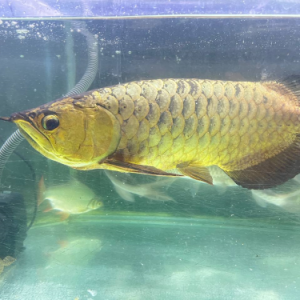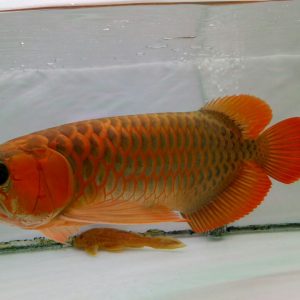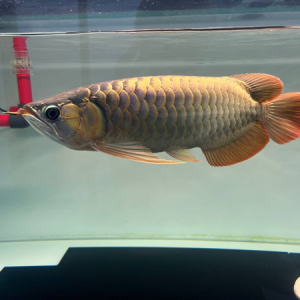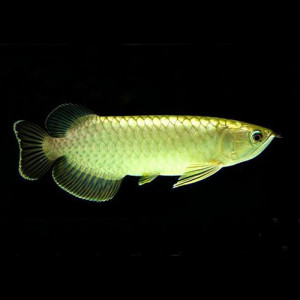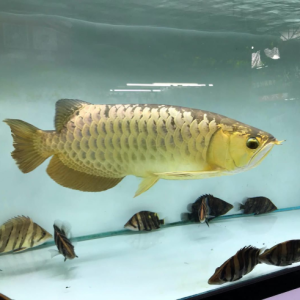Types Of Arowana
Types of arowana, often referred to as “dragon fish,” are one of the most sought-after freshwater aquarium fish due to their striking appearance and fascinating behaviors. Originating from various parts of the world, they have captivated aquarists for centuries. Here’s an overview of the different types of arowanas and what makes each unique:
Asian Arowana (Scleropages beautiful)
Origin: Southeast Asia
Appearance: Known for its metallic sheen and vibrant colors, the Asian arowana can be gold, red, or blue. Its long fins and streamlined body give it an elegant look.
Significance: Often considered a symbol of luck and prosperity in many Asian cultures, the Asian arowana is highly sought after, leading to its high price in the aquarium trade.
Care Requirements: Requires a large tank (minimum 250 gallons) and pristine water conditions. They thrive in soft, acidic water.
Secondly, Silver Arowana (Osteoglossum bicirrhosum). The origin has to do with South America the amazon basin. The silver arowana features a sleek, elongated body and can grow up to 3 feet long. Its shiny, silver scales reflect light beautifully.
Meanwhile, silver arowana has an acrobatic ability of jumping. With observation it leaps out of the tank in search of insects.
Furthermore, Black Arowana (Osteoglossum ferreirai) which has its origin from South America, Brazil to be specific.
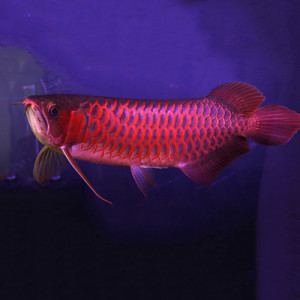
Silver Arowana (Osteoglossum bicirrhosum)
The silver arowana is native to the Amazon Basin which is long naturally, slender body and shiny silver coloration. This fish can grow up to 4 feet long in the wild but are typically smaller in captivity. Silver arowana has the ability to jump and require a tall aquarium to accommodate their behavior. They are generally more hardy than their Asian counterparts and are a popular choice among aquarium enthusiasts. Their diet consists mainly of live food, which they hunt using their excellent eyesight.
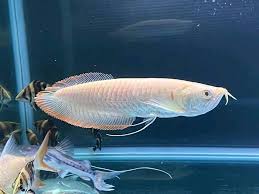
On the other hand, Black Arowana (Osteoglossum ferreirai)
Found primarily in the dark waters of the Amazon, the black arowana features a dark, almost black coloration with a metallic sheen. This species tends to grow to about 3 feet in length and has a more elongated, streamlined body compared to the silver arowana. Black arowanas are less common in the aquarium trade but are prized for their unique appearance. They thrive in well-planted tanks that mimic their natural habitat, which is rich in organic matter. Their diet consists mainly of insects and smaller fish, reflecting their carnivorous nature. arowana type
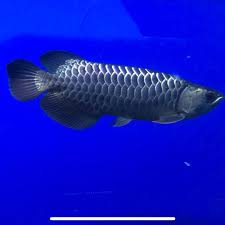
However, Jardini Arowana (Scleropages jardinii)
The Jardini arowana, native to northern Australia and New Guinea, is known for its striking appearance, featuring a mix of silver and vibrant colors like gold and green. This species grows to about 3 feet and is popular among aquarists for its relatively hardiness and captivating look. Above all jardini arowanas are territorial and may show aggression towards tank mates, making it crucial to select compatible species for a community tank. Their diet typically includes a mix of pellets, live foods, and high-quality frozen foods. arowana type

Emphasis on arowana types and names is an important factor to get famaliar as an arowana enthosiast.
Yet Australian Arowana (Scleropages leichardti)
Also known as the Murray River arowana, this species is common in the freshwater systems of Australia. The Australian arowana is less commonly kept in aquariums but has the ability to adapt to various water conditions. It typically grows to about 2 feet in length and exhibits a more subdued coloration compared to other arowanas. This species enjoys a varied diet, including both plant and animal matter, making it a versatile choice for aquarists. arowana type
In fact to know arowana types and names is the starting point for anyone who has interest in arowana.
Arowana lifespan
The lifespan of arowanas varies significantly depending on the species and the conditions in which they are kept. Generally, arowanas can live for a long period of time, with many species capable of living for 10 to 20 years in captivity when one can provide proper care. In some cases, especially with the Asian arowana, individuals have testify it can live even longer, reaching up to 30 years.
Arowanas thrive in environments that closely mimic their natural habitats, which include stable water conditions, adequate tank size, and appropriate diet. In an aquarium setting, factors such as water quality, temperature, and diet play crucial roles in their overall health and longevity. Regular water changes and maintenance are essential to prevent diseases that could shorten their lifespan. A diverse diet consisting of high-quality pellets, live food, and occasional treats can also enhance their health and vitality.
Stress can significantly impact an arowana’s lifespan. Factors such as overcrowding, aggressive tank mates, and poor water conditions can lead to stress and cause the immune system to be weak, making them more susceptible to illness. Therefore, providing a suitable environment with ample space and compatible companions is vital for ensuring a long and healthy life.
Overall, with the right care and environment, arowanas will live in companionship in the aquarium, offering years of enjoyment to their owners. Their impressive lifespans not only reflect their resilience but also the rewarding experience of nurturing such remarkable fish.
This makes it important to know arowana types and names in other to be sure of the exact one you want to buy which brings us to arowana type.
Types Of Arowana
Types Of Arowana
Types Of Arowana
Types Of Arowana
Types Of Arowana
Types Of Arowana
Types Of Arowana
Types Of Arowana
Types Of Arowana
Types Of Arowana
Types Of Arowana
Types Of Arowana

